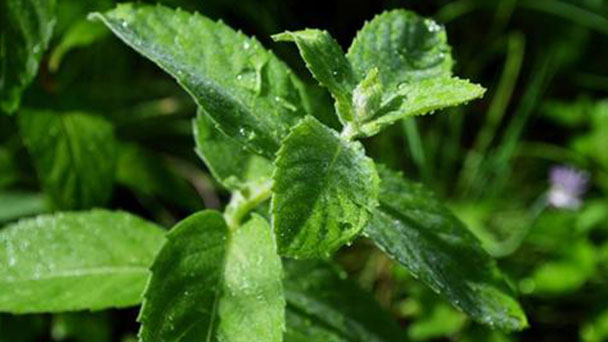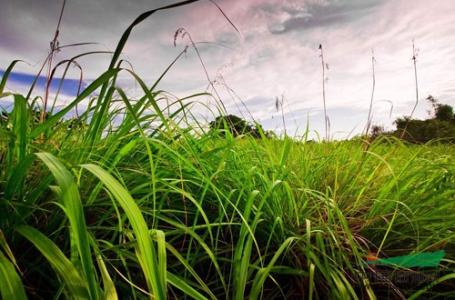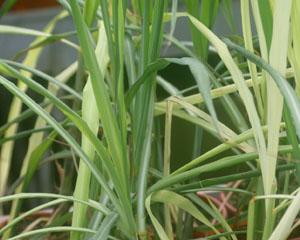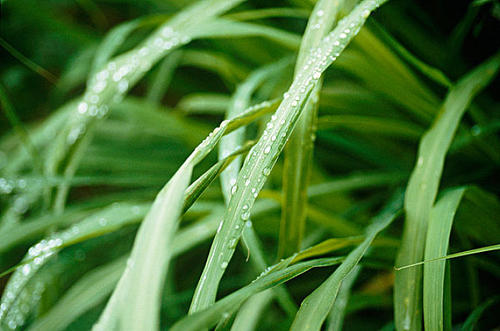How to grow and care for lemongrass
Written by Maggie
Mar 23 2021

Lemongrass thrives in areas where conditions mimic the tropical habitats of its origin. Plants like lots of heat, light and water: provide these, and Lemongrass grows quickly. Now, let's see growing Lemongrass care.

Light care for growing lemongrass
In its native habitat, Lemongrass can grow in full sunlight even in hot climates. When we grow and care for lemon grass plant, the energy needs of plants can be met with at least six hours of direct sunlight a day. Plants growing in the shade will be sparse and may attract pests.
Soil care for growing lemongrass
Lemongrass plants prefer fertile loam soil. When we grow and care for lemon grass plant, we can create the ideal soil by adding several different soil modifiers: compost, fertilizer, and leaf mold are all enrichment additives that can be added during planting.
Water care for growing lemongrass
Unlike some ornamental grasses, Lemongrass is not drought-resistant. When we grow and care for lemon grass plant, keep your roots constantly moist for optimal plant health. A 3-inch mulch will help retain soil moisture and enrich the soil as it decomposes.
Temperature and humidity care for growing lemongrass
As a tropical plant, Lemongrass thrives in hot, humid climates. The time to plant Lemongrass outdoors is similar to the time to plant tomatoes: when the nighttime temperature is 60 degrees Celsius, it's time to plant. Lemongrass is very sensitive to frost, so when we grow and care for lemon grass plant in winter, bring them inside before the temperature rises to 40 degrees Celsius.

Fertilizer care for growing lemongrass
As a grass plant, Lemongrass requires nitrogen-rich fertilizer for its best growth. When we grow and care for lemon grass plant, we can use a 6-4-0 slow-release fertilizer that can be fed to Lemongrass throughout the growing season. You can also water Lemongrass plants with fertilizer tea, which will increase micronutrients.
Trimming care for growing lemongrass
When we grow and care for lemon grass plant, lemongrass plants that have had their hair cut over a year can be trimmed once a year to organize the plant and remove dead leaves. When the plants are at rest, cut them to about 6 inches tall at the end of winter. The Lemongrass plants will bounce back quickly and sprout new shoots when the warm weather returns.
Growing lemongrass care for common diseases and pests control
In some areas, anti rust fungi affect Lemongrass plants. Symptoms include brown spots or streaks on the leaves, causing the plant to die. Rust is prevented by watering at the soil level.

Latest Updated
- Benefits of Bugleweed - 7 Science-backed Health Benefits
- Bugleweed Dangers & Side Effects - Is It Poisonous?
- How to Plant Evergreen Trees - What You Should Know
- When to Plant Evergreens - Grow Guide for Evergreen Trees
- 12 Wonderful Evergreen Shrubs for Your Garden
- 12 Popular Evergreen Plants with Pictures for Beginners
- When And How To Prune A Lilac Bush Like a Pro
- How to Grow & Care for Lilac Vine (Hardenbergia Violacea)
- Japanese Lilac Tree (Syringa Reticulata) Care & Propagation Guide
- Shumard Oak Pros and Cons - What to Know
Popular Articles
- Winter maintenance of Antirrhinum Majus
- How to Grow Terminalia Mantaly Tree
- How to Grow and Care for Crossostephium Chinense
- How to grow Antirrhinum Majus in spring
- Peristeria Elata (Dove Orchid) Profile: Info & Care Guide
- Underwatered Snake Plant (Sansevieria Trifasciata) - Signs And How To Fix
- How to Care for Brazilian Jasmine Plant (Mandevilla Sanderi)
- How to Grow & Care for Graptopetalum Purple Delight in Summer
- Rosa Chinensis (China Rose): Plant Growing & Care Tips
- How to Care for Baby Sun Rose (Aptenia Cordifolia)